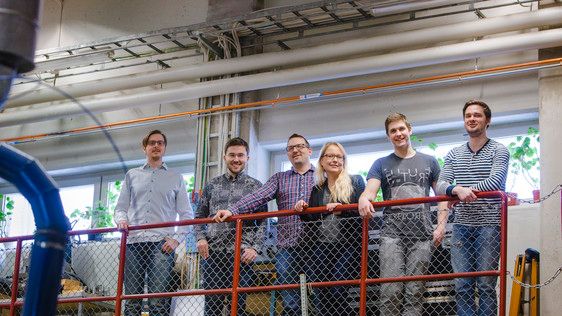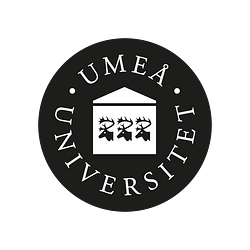
Press release -
Physics students at Umeå University in a race to the Moon
Students in Engineering Physics and researchers at Umeå University together with the organisation Space Science Sweden have engaged in a revived race to the Moon. They are developing an instrument to measure the electric field of the lunar surface, something that has never been done before.
“This is a great challenge for our physics students and a fantastic opportunity to work with a project that will make an impression on the Moon”, says Maria Hamrin, Associate Professor in Space Physics and Programme Co-ordinator for the Master of Science programme in Engineering Physics at Umeå University.
The Moon is our closest neighbour in space and the only celestial body visited by humans. The Moon was a hot destination in the 1960s and 1970s, but then our first outpost in space was abandoned for exploration of other parts of the solar system. Since 1976, only one moon-landing has taken place; in 2013 when China launched a robotic moon lander with a rover – an unmanned land craft, to perform geologic studies of the Moon.
But, the race to the Moon is on again – and students and researchers at Umeå University take part in the chase. In a new exciting project, they will build a measuring equipment that will be launched in a rocket to the Moon in November 2017.
“This is a fantastic project for our students, but also for the University as whole,” says Anders Fällström, Pro-Vice-Chancellor of Umeå University. “Space plays an important part in spiking interest in science and in recruiting students to science education programmes. For a university to have students take part in a project that will land on the Moon is really something extra.”
The initiative comes from Space Science Sweden, a group in Umeå interested in space issues. Together with the German engineering community PT Scientists, they are participating in the Google competition Lunar Xprize with the aim to send a privately funded robot to the Moon. In collaboration with the car manufacturer Audi, PT Scientists has developed a rover that can drive on the lunar surface, place measuring equipment there and send data back to Earth. The Germans called for enthusiasts willing to develop and carry out experiments on the Moon. Space Science Sweden took on the challenge – and were given the assignment.
“We have developed a thermally protected container for scientific measuring equipment,” says Sebastian Sjöquist, Space Science Sweden. “Our own experiment aims at making lithium batteries work in vacuum, but we realised we had room for a scientific experiment too.”
“They then contacted our students and researchers to add content to the container,” says Maria Hamrin. “We chose to build an instrument that can measure the electric field of the lunar surface, because this hasn’t been done before.”
The electric field puts the lunar dust in motion, which can interfere with electronic equipment. More knowledge about the electric field is important for future missions to the Moon and other places in place.
Research groups in Space Physics and Optical physics will contribute to the project, while students will be the ones building and testing the instrument.
“Like all space missions it’s a high risk project since both the rocket, the rover landing on the Moon and its instruments will be exposed to considerable strain,” says Maria Hamrin. Even if something goes wrong, and the instrument are unable to return data, one of our most important goals will still be achieved: We will have shown that it’s possible to build scientifically relevant space instruments with limited resources and in collaboration with students.”
Umeå University has allocated SEK 150,000 to the project, which funds the building and testing of the instrument. PT Scientists sponsors all costs related to the space flight.
For more information, please contact:
Maria Hamrin, Associate Professor of Space Physics, Programme Co-ordinator for the Master of Science programme in Engineering Physics, Umeå University
Phone: +46 90 786 60 36
Email: maria.hamrin@umu.se
Sebastian Sjöquist, founder and project coordinator, Space Science SwedenPhone: +46 73 036 15 12
Email: sebbe.sjoquist@gmail.com
Isak Silander, research engineer, Department of Physics, Umeå University, and member of Space Science Sweden
Phone: +46 90 786 67 75, +46 73 651 99 89
Email: isak.silander@umu.se
Photos for download
https://mediabank.umu.se/share/dac0f25b0cd3904c4da9c62e529e54d1
Topics
Categories
Umeå University
Umeå University is one of Sweden's largest institutions of higher learning with over 32,000 students and 4,200 employees. We have a well-established international research profile and a broad range of study options. Our campus constitutes an inspiring environment that encourages interdisciplinary meetings - between students, researchers, teachers and external stakeholders. Through collaboration with other members of society, we contribute to the development and strengthen the quality of our research and education.

